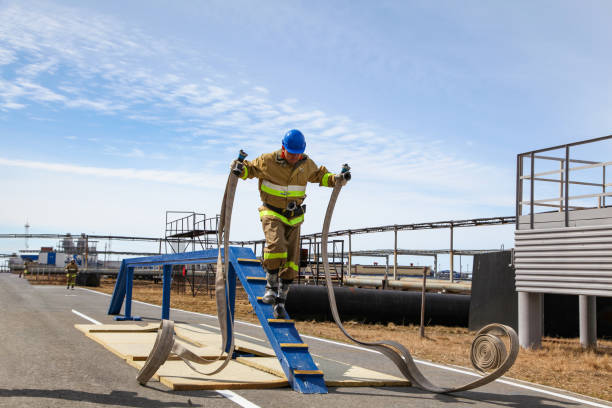January 18, 2024 / By sprayfk_admin
Fireproofing, a crucial aspect of building safety, involves the application of materials or treatments to reduce the risk of fire-related damage. Knowing when fireproofing is needed is vital to safeguard both residential and commercial structures. Exploring the types of fireproofing, their advantages, and disadvantages provides valuable insights into fortifying structures against potential fire hazards.
When is Fireproofing Needed?
Fireproofing becomes essential in spaces where the risk of fire is heightened, such as industrial facilities, commercial buildings, and even residential homes. This proactive measure aims to delay or prevent the spread of flames, offering valuable time for evacuation and minimizing property damage.
Types of Fireproofing
- Intumescent Coatings: Intumescent coatings provide discreet protection by expanding when exposed to heat, forming an insulating layer. Their versatility makes them applicable to various surfaces, but periodic maintenance may be necessary.
- Cementitious Fireproofing: Durable and impact-resistant, cementitious fireproofing is ideal for high-traffic areas, offering reliable protection for steel structures. However, its application can be labor-intensive, and periodic reapplication may be required.
- Vermiculite and Perlite Fireproofing: These lightweight mixtures provide effective fire insulation, often used in spaces with limited room. However, their resistance to severe impact may be limited.Benefits of Fireproofing:
Benefits of Fireproofing
- Life Safety: The primary benefit of fireproofing is the preservation of life. By slowing down the spread of flames, occupants have more time to evacuate safely.
- Property Protection: Fireproofing helps minimize structural damage, reducing repair costs and ensuring the longevity of the building.
- Code Compliance: Many building codes mandate fireproofing measures to enhance overall safety standards, making compliance a legal requirement.
- Insurance Premiums: Buildings with adequate fireproofing measures in place may qualify for lower insurance premiums, reflecting reduced risk.
Conclusion: Enhancing Safety through Informed Choices
Examining the pros and cons of diverse fireproofing techniques empowers property owners to make well-informed decisions, aligning with specific needs and budget constraints. Whether choosing intumescent coatings, cementitious fireproofing, or other methods, the objective is consistent: fortifying structures for enhanced safety. As a proactive investment, fireproofing is pivotal in bolstering resilience against unpredictable fire hazards. For trusted fireproofing spray ontario, Spray Foam Kings stands as a reliable choice, ensuring structures prioritize life safety and property protection with expert solutions.


